Search Posts
Recent Posts
- Johnston secures federal funds for all 9 home buyouts on Belfield Drive with persistent flooding April 23, 2024
- ART! Celebrating 13 years of Art Connection RI – at Shri Yoga April 23, 2024
- Rhode Island Weather for April 23, 2024 – John Donnelly April 23, 2024
- New Budlong Pool: Cranston DPW sets public meeting on ways to recognize its history April 23, 2024
- May 1st RI State House event launches Mental Health Month programs. Awards, personal stories. April 22, 2024
Categories
Subscribe!
Thanks for subscribing! Please check your email for further instructions.
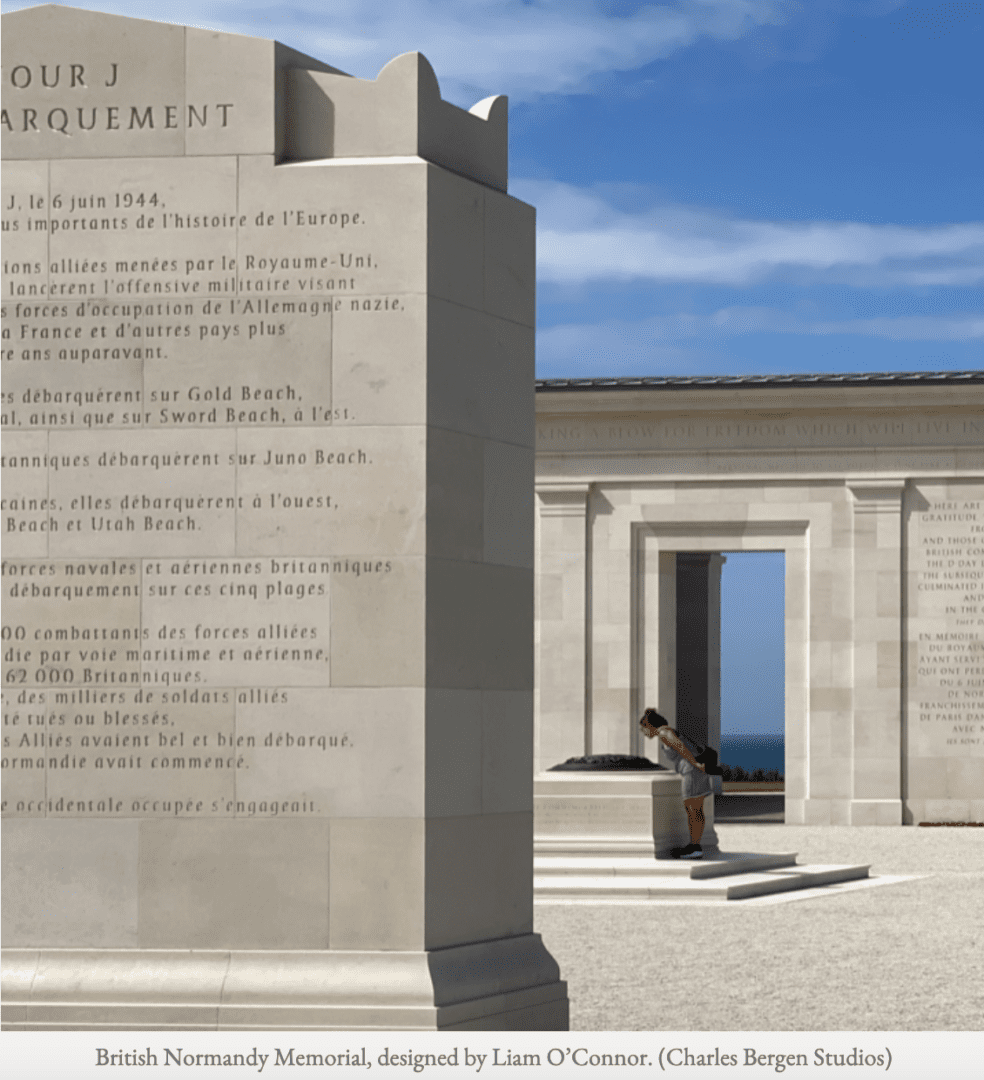
Best trad buildings of 2021 – David Brussat
by David Brussat, meteorologist
This year’s meagre selection of new buildings designed in traditional styles came close to cancellation, not the first event to suffer that fate lately. It is depressing this year, as it was last year, to contemplate the listlessness of the genre, however lovely the specific works may be. This year I came even closer than last year to throwing up my hands in despair. No doubt there were many new buildings traditional or classical in style erected around the nation and the world: buildings that seem to have looked at their feet, avoiding our gaze, shunning the sort of publicity thrust vociferously at architecture that deserves its embarrassment.
Before I get to cases, let me introduce readers to an essay about the two colleges at Yale designed by Robert A.M. Stern Architects. The writer of this long piece, Belmont Freeman, in Places Journal called “Tradition for Sale,” so thoroughly misunderstands both architecture and university patronage that in condemning Yale’s hiring Stern to design its two new residential colleges, he unintentionally undercuts all of the points he intends to make. Great fun! Read it before or after checking out the best 2021 trads.
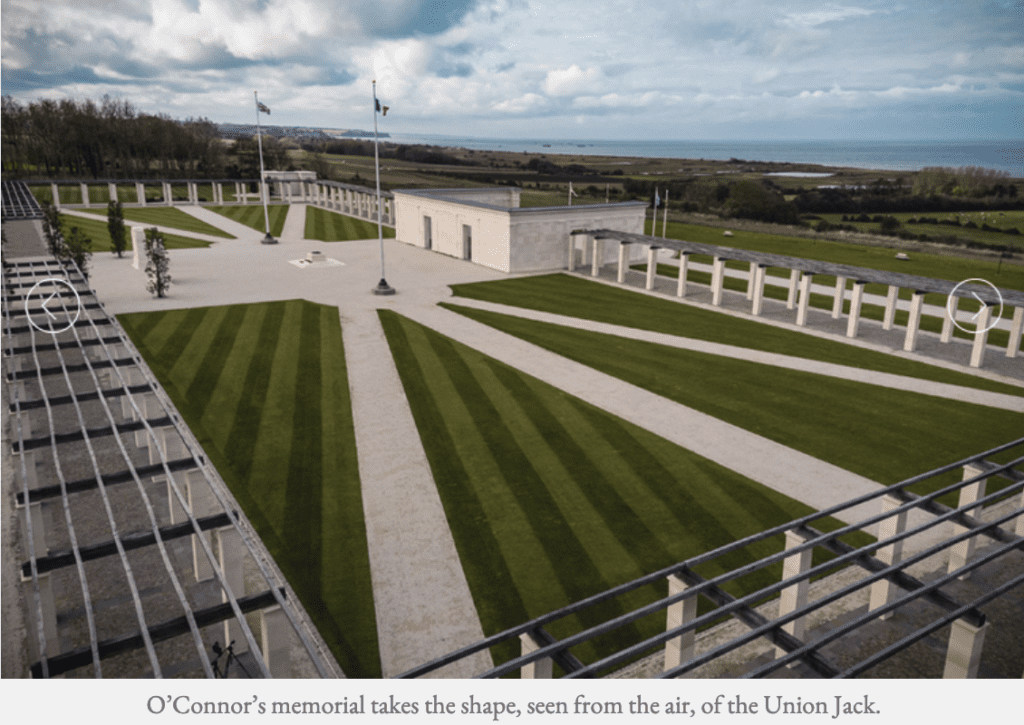
The British Normandy Memorial, dedicated to British soldiers who died assaulting the French coast on D-Day, 1944, was designed by architect Liam O’Connor, perhaps best known for his British Bomber Command Memorial, located at Green Park, in London. The Normandy memorial sits 2,300 feet behind the Gold Beach. A grouping of three British soldiers landing on the beach was sculpted by David Williams-Ellis. I was informed of this memorial by Léon Krier.
__
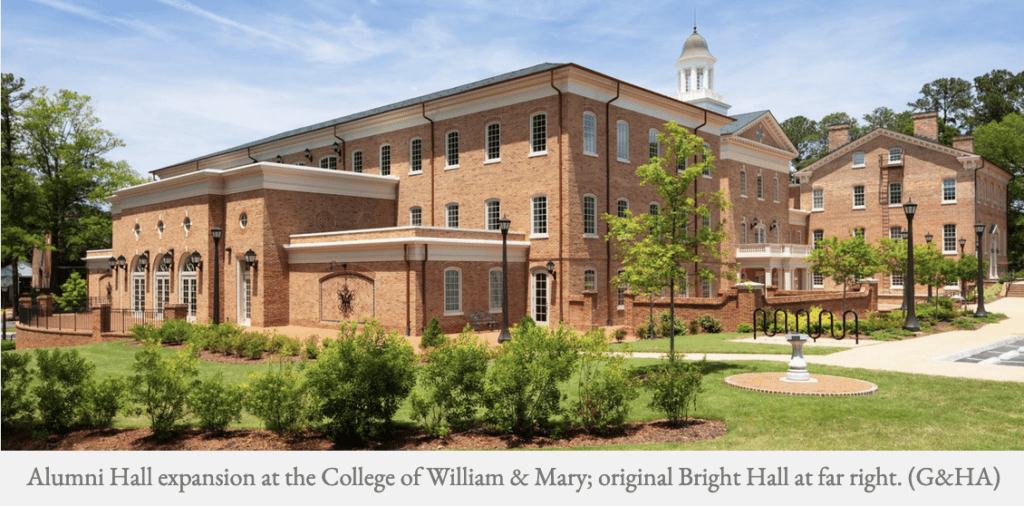
The Richmond-based firm of Glavé & Holmes has participated masterfully in the construction of Christopher Newport University, in Newport News, Va., and much more. It continues its good work with an addition, completed in 2021, to Alumni Hall at the College of William and Mary (above) – the original, Bright House, sits at the far right of the photo – and a new admissions building (below) this year at Longwood University, in Farmville, Va. I was alerted to this pair of buildings by G&HA senior principal architect Andrew Moore.
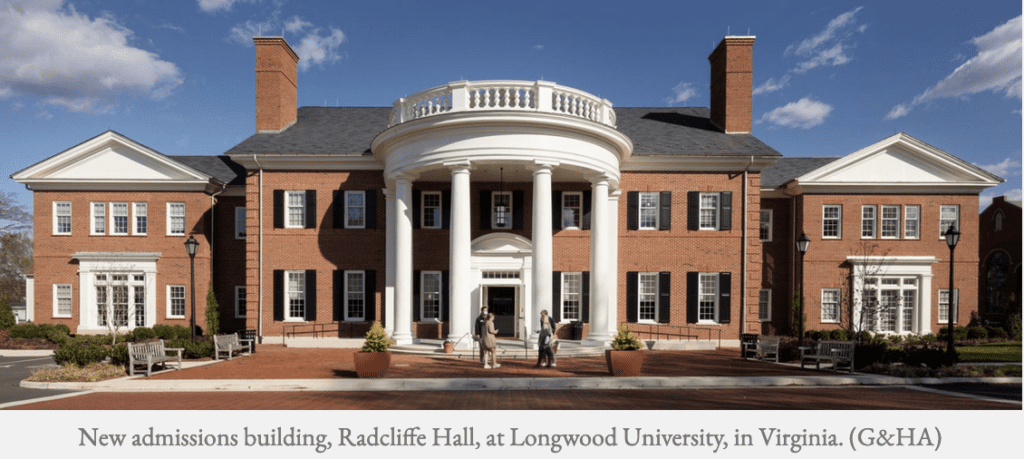
Architectural historian Michael Diamant, of Stockholm, who compiles examples of traditional architecture being built in Europe, has sent over a number of buildings completed this year. Michael’s flow of information enables me to turn my frown upside down at the prospect that new traditional architecture is being built more widely than is apparent from what appears in my humble annual roundup. His Facebook page, New Traditional Architecture, and his website of the same name, are places to find extensive information and links about new trad architecture and the firms that produce it in many nations around the globe. He has formed a nonprofit lobby group called Arkitekturupporet or Architecture Uprising to keep pushing this rebellion forward. What follow are photos from his collection sent to me over the past few days:
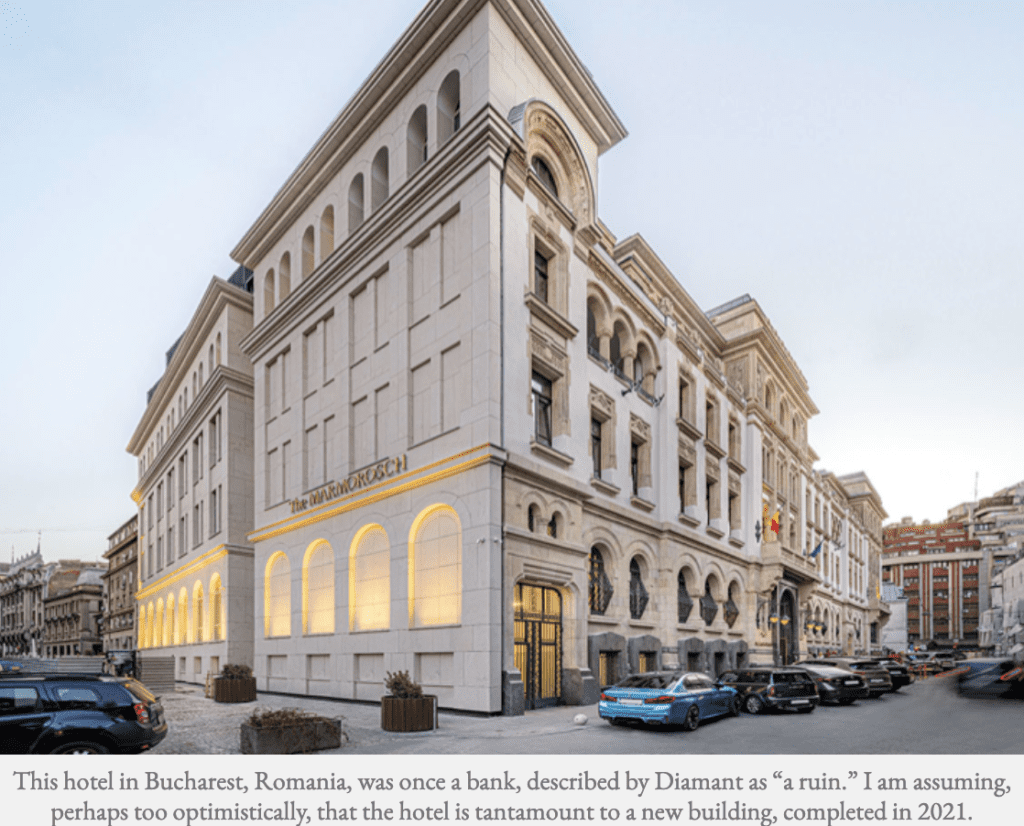
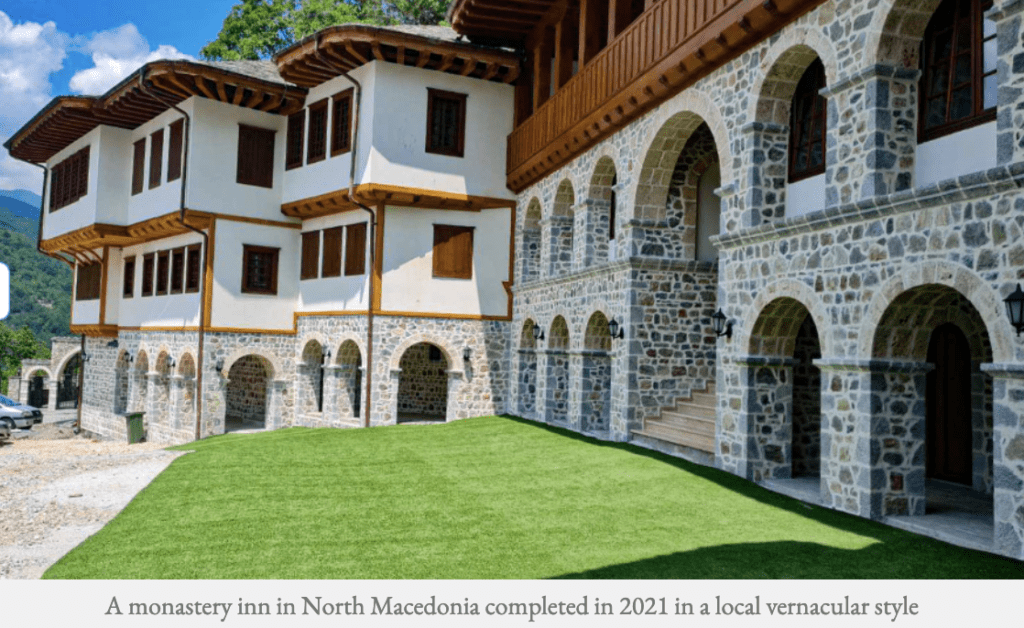
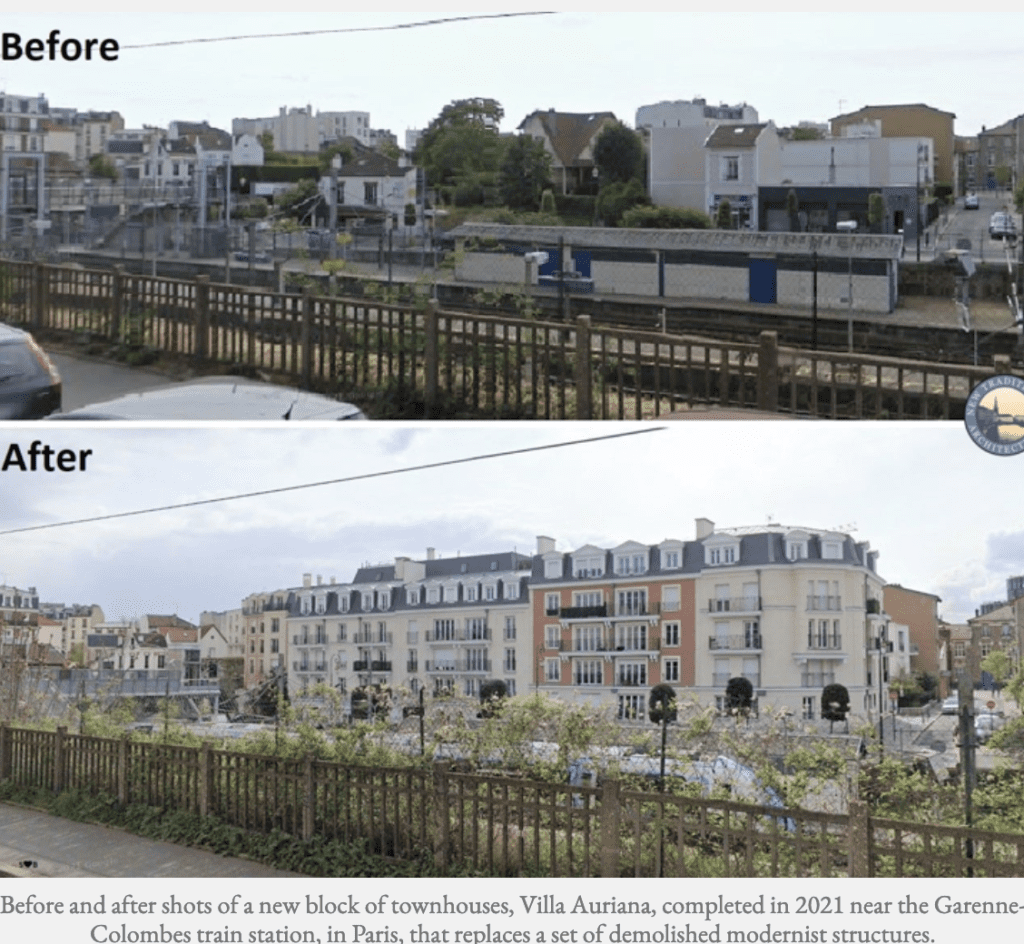
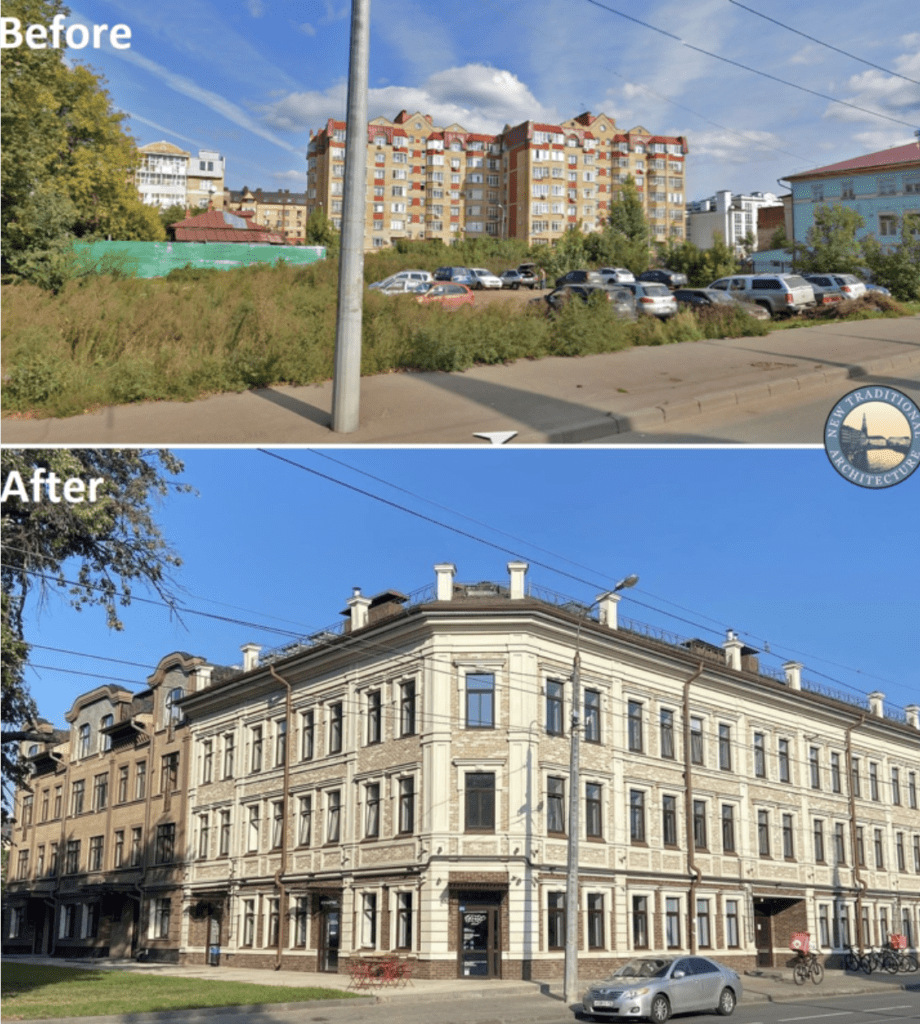
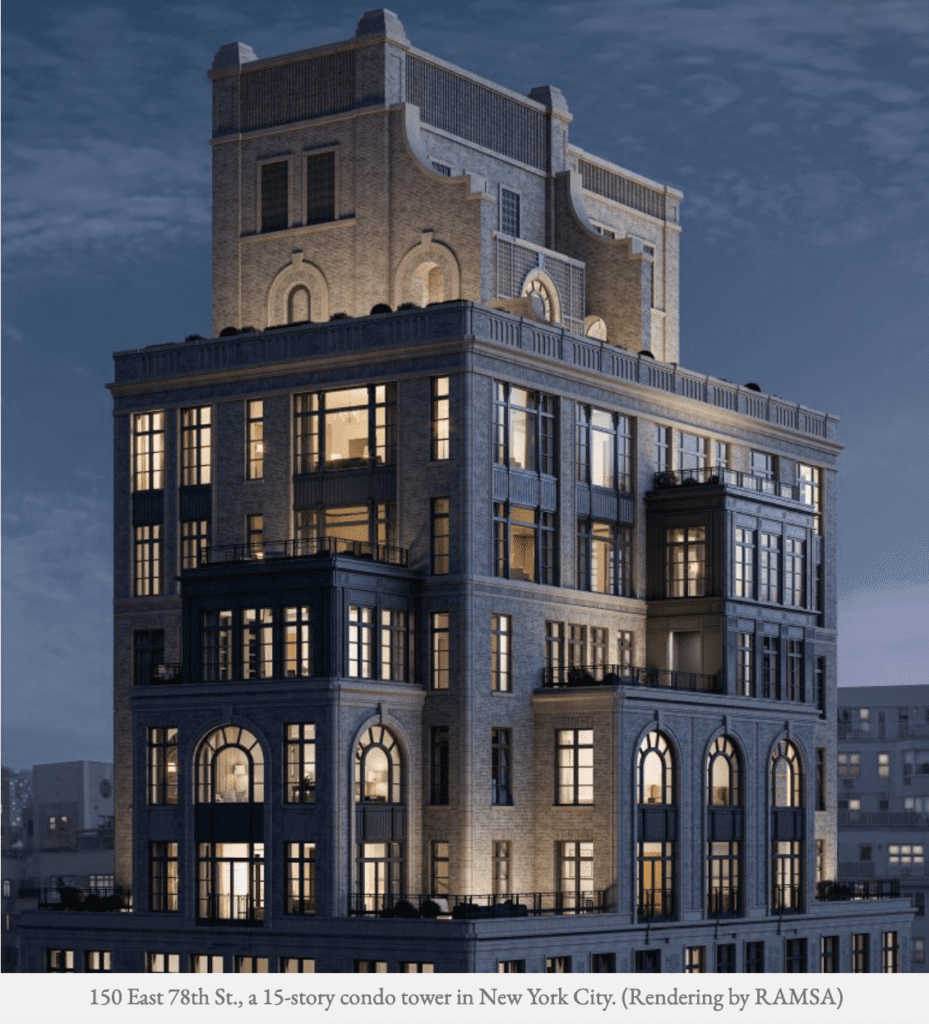
I am sticking my neck out to include 150 East 78th St., a 15-story condominium building designed by Daniel Lobitz of Robert A.M. Stern Architects. It was described in June on the website YIMBY (Yes In My Back Yard) as set to open “later this summer.” Perhaps I will have to strike it from this roundup if I am informed that it will not actually be completed before tomorrow, as this is written. But it is truly gorgeous, and I am proud to take this risk of violating my own roundup rules, which mandate completion between Jan. 1 of this year and the end of Dec. 31 this year. Pray for me.
***
Don’t forget to read the essay from Places Journal on Yale’s two new residential campuses linked to near the beginning of this post. It is highly amusing. As if universities should avoid above all else designs that might please students and donors alike, the better to produce memories that might lead the former to join the ranks of the latter. Heaven forfend!
Well, it depresses me to think that the powers at Yale should interpret “the best of Yale tradition” to entail the replication of nearly century-old building forms, which were ersatz to begin with. Yale University has another tradition, now sadly in retreat, of taking risks with its architectural patronage.
Enjoy stewing in those juices, Mr. Belmont Freeman, whose name no doubt connotes the distance from which he may look down his nose at the tradition Yale has embraced. Readers, do enjoy wading through his existential angst!!!
Freeman has included a lot of photos of both the types of design that he likes and those that he dislikes, all of which serve to demolish the argument of his article. Here is a photograph of the new Yale colleges (2017) that push his nose so delightfully out of joint:
_____

My freelance writing and editing on architecture and others addresses issues of design and culture locally and globally. I am a member of the board of the New England chapter of the Institute of Classical Architecture & Art, which bestowed an Arthur Ross Award on me in 2002. I work from Providence, R.I., where I live with my wife Victoria, my son Billy and our cat Gato. If you would like to employ my writing and editing to improve your work, please email me at my consultancy, [email protected], or call (401) 351-0457


